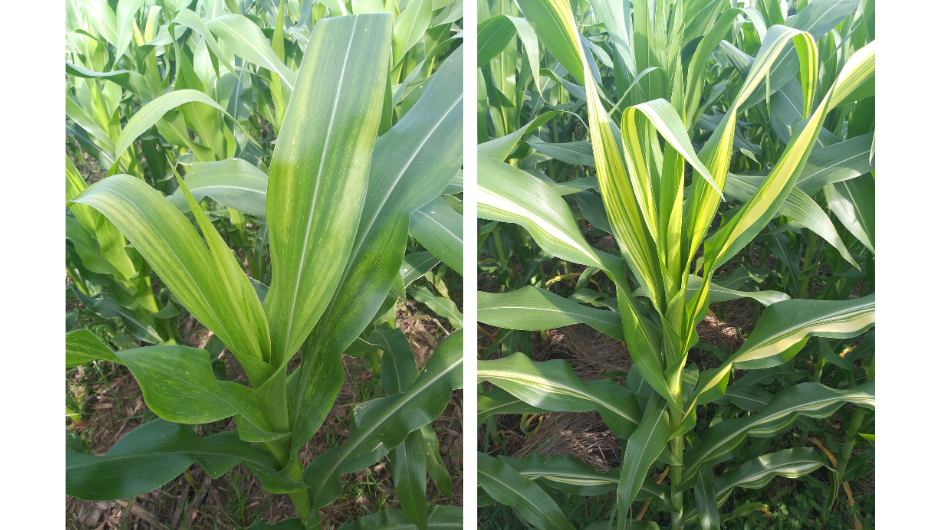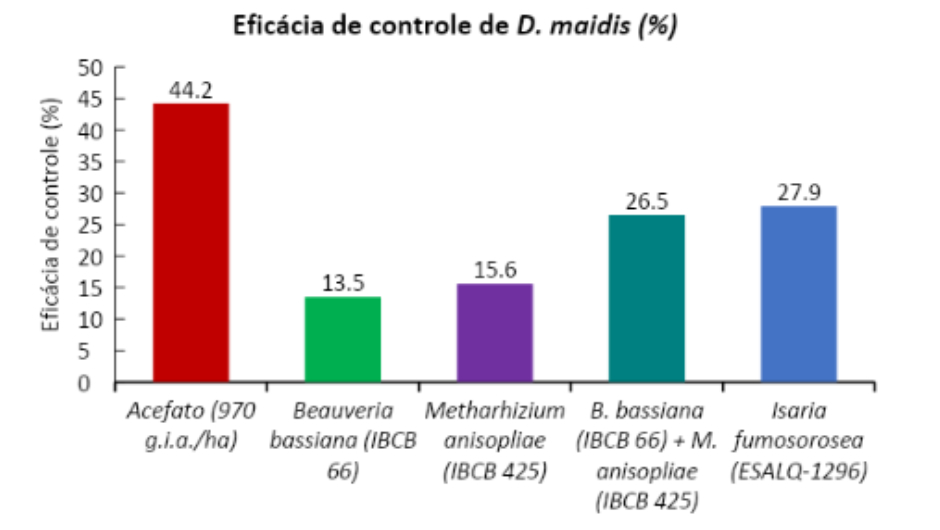Challenges and best practices in cultivation and soil management for corn production
By Eduardo Zavaschi, corn specialist at Agroadvance, Orbia partner
The cigarhopper (dalbulus maidis), in recent years, has been the main pest of corn crops. The leafhopper has been found in all regions of Brazil, with the exception of the northern region. Generally the population of D. maidis It establishes itself during the first corn harvest and, during the off-season corn, this pest ends up increasing its population density in the crops.
D. maidis is the vector of mollicutes, phytoplasma (Maize bushy stunt phytoplasma) to Spiroplasma kunkelii, causal agents of red stunt and pale stunt, respectively, and the fine streak virus or stripe virus (Maize rayado fine virus - MRFV). Direct damage, caused by the suction of phloem sap, D. maidis are not as relevant as the transmission of phytoplasma, spiroplasma and corn streak virus. Thus, it is the damage caused by these diseases that result in severe losses in the corn crop.
Pale stunting presents the following symptoms: initially there are wide discolored, yellowish stripes at the base of the infected leaves; subsequently, new leaves show the same symptom. Furthermore, the infected plant may present shortened internodes, malformed, deformed or absent ears and deformations in the tassel. However, in some cases, symptoms may be mild or even absent.
Red stunting presents symptoms such as: reddening of older leaves and shortening of internodes, abnormal tillering and development of several spikelets. The stunt complex (pale and red stunt) also causes ear rot and stem breakage, making the harvesting operation difficult and causing significant loss of productivity.
The first symptoms of stripe virus, around 30 days after sowing, are small chlorotic spots at the base and along the veins of young leaves. Over time, they become more visible, with a large number of chlorotic spots, which merge, taking on the appearance of short stripes and remaining visible even in plants in the production phase. Infected plants may also have smaller ears and kernels than uninfected plants.


The presence of leafhoppers in corn crops can be detected using yellow sticky traps or visual observations, mainly on the corn plant cartridges. The minimum frequency of observations is weekly. Traps need to be changed weekly. As it is an insect vector of phytopathogens, there is no established level of control and its mere presence justifies the adoption of control measures.

Due to the high populations of corn leafhoppers in crops and their high mobility and migration in the field, there has been immense difficulty in controlling this pest. Given this scenario, it is necessary to adopt all available techniques to successfully control the pest. Among the control techniques, the following can be highlighted:
• Control of host plants: Volunteer corn plants can harbor the leafhopper during the off-season, providing a “green bridge” for this pest between corn plantations, which serves as a source of inoculum for both stunting and viruses. corn volunteers.
• Leafhopper control on adult corn plants: If, alongside the early-stage corn crop, there is a crop with adult corn plants, it is necessary to adopt some strategy to control at least a range of older plants, to reduce the migratory flow.
• Hybrids tolerant to pathogens that cause stunting: Very susceptible hybrids can present losses, even in a scenario of excellent control, as even in a low population of leafhoppers, mollicutes and viruses are transmitted.
• Seed treatment: Systemic insecticides, such as neonicotinoids, are effective in control and consequently reduce plant infection.
• Biological control: in recent harvests it has been widely used; It has a very interesting performance, especially when combined with chemical control and integrated pest management (IPM) practices.
• Chemical control: it is the most used tool since the beginning of the leafhopper problem; however, it is currently necessary to use other technologies due to low control efficiency in large populations.
The path to chemical control is to seek increasingly selective insecticides, especially in relation to natural enemies. In relation to neonicotinoids, in foliar spraying, mainly thiamethoxam and imidacloprid, low efficacy has been observed in controlling D. maidis at field level. When these molecules are evaluated in the laboratory or in seed treatments, thiamethoxam and imidacloprid show excellent performance. Therefore, the low efficacy of thiamethoxam and imidachlorpid in the field may be associated with toxicity to the leafhopper's natural enemies. For example, Godoy (2010) found high mortalities of Chrysoperla externa, a species of predatory lacewing, in experiments with thiamethoxam and imidacloprid.
In this scenario, more selective molecules tend to perform better than broad-spectrum insecticide molecules. Also with the associated use of biological insecticides, depending on the compatibility of the products, greater efficiency in leafhopper control can be achieved. Compatibility tests of biological insecticides with chemical insecticides indicate the possibility of mixing these types of pesticides in the same application.
The figure below shows the effectiveness of a chemical molecule (acephate) and biological insecticides. Due to the migratory flow of the leafhopper in the crop, the control effectiveness may be numerically lower in field observations, but it can be used for comparative purposes. Where biological insecticides are more than 50% as effective as the reference chemical insecticide. These efficacies occur with at least three applications of the biological product.
The number, frequency and weather conditions of applications are decisive for the performance of biological insecticides. Regarding the weather conditions of applications, applications are recommended at the end of the day (early evening) or early in the morning (early day) to ensure greater efficiency. Because they are microorganisms, biological insecticides require greater storage care, especially shelf life and high temperatures (it is recommended to avoid temperatures above 25°C).

*By Jonas Dahmer, Maycon Vinicius Laia de Aquino e Rodrigo Ferraz Ramos, from Staphyt Brasil

Receive the latest agriculture news by email
By Eduardo Zavaschi, corn specialist at Agroadvance, Orbia partner
Formed by the MF 8S.265 tractor and the Momentum 18 seeder, the set sold by Massey Ferguson is full of technologies and innovations, the result of a project that met the appeal of customers around the world.